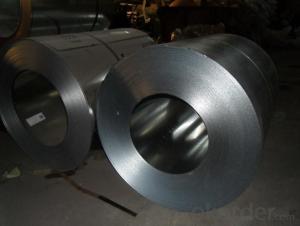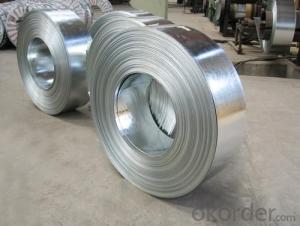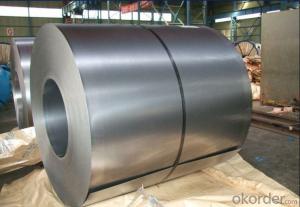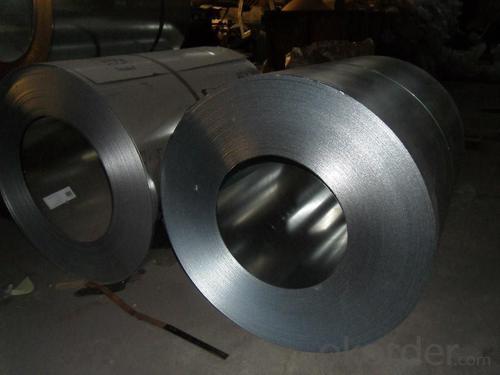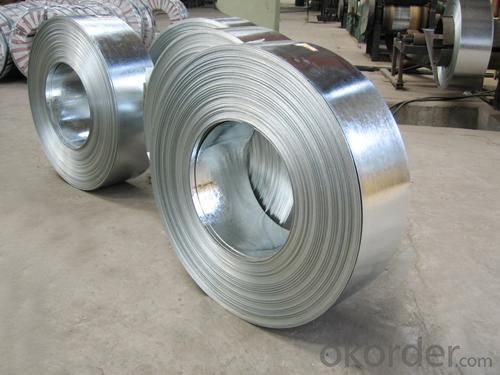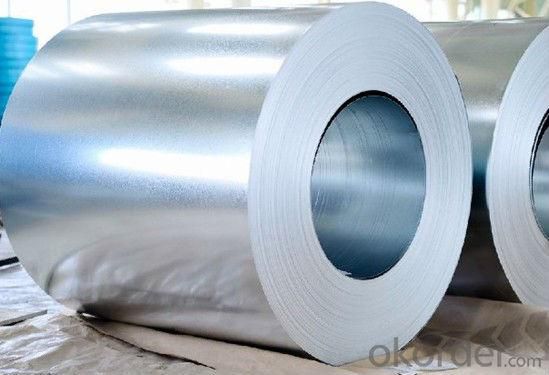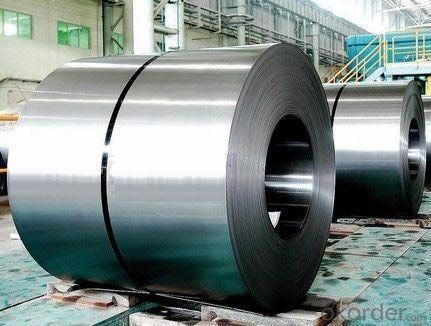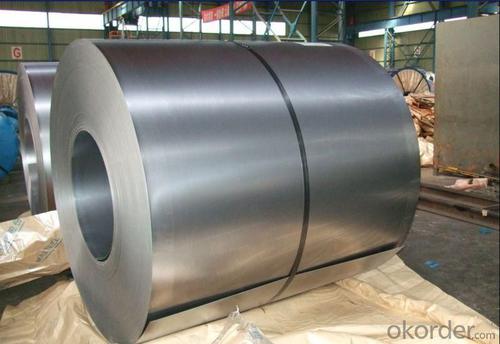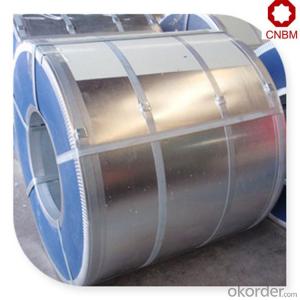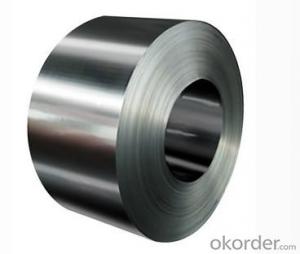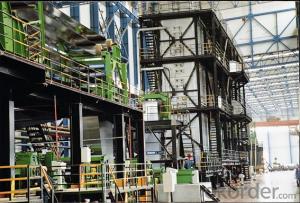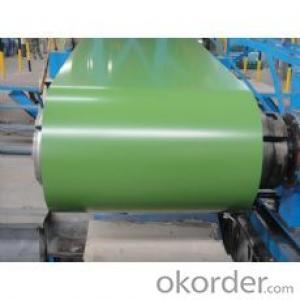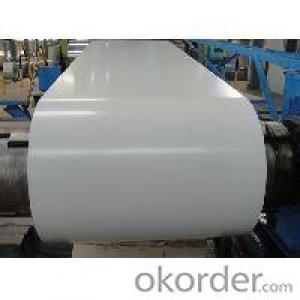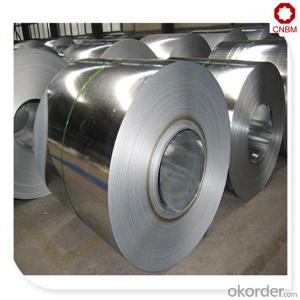Dx51D Z100 Galvanized Steel Coil
- Loading Port:
- China main port
- Payment Terms:
- TT OR LC
- Min Order Qty:
- 5 m.t.
- Supply Capability:
- 100000 m.t./month
OKorder Service Pledge
OKorder Financial Service
You Might Also Like
Specification
Dx51D Z100 Galvanized Steel Coil
Specifications
1, Thickness: 0.15-2.00mm
2, Width: 900-1250mm
3, Coil Weight: 3-10 ton
Process of galvanized steel coils
Pay off reel → double cut shear → welder-notcher → entry accumulator → pre cleaning section → furnace → hot bridle → zinc pot → air knife → after cooler → water quench → dryer → skin pass mill → dryer → tension leveler → dryer → chemical coater → chemical oven → cooler → exit accumulator → oiler → exit shear → tension reel.
Plates/Coils/Sheets | |
Commodity | Galvanized Steel Plate/Coils/Sheets |
Material | JISG3302,SGCC,DX51D,Q235 |
Technique | Hot Dipped Galvanized |
Standard | GB,ASTM,JIS,BS,DIN |
Certificate | ISO9001:2008,MTC,BV,SGS |
Price term | FOB,CNF,CIF |
Port of shipment | any Port in China |
MOQ | 40tons |
Delivery time | 7-25days |
Zinc coating | 60-275g/m2(both side) |
Length | 1m-12m or as Client`s Requirment |
Spangle | Zero,Small,Big Spangle |
Width | 400-2000mm |
length | 1-12m |
Thickness | 0.13—3mm |
Coil ID | 508mm/610mm |
Coil Weight | 5-8ton |
Ability | 30000tons/per Month |
Package | Standard Export Package |
Surface | Cromated,Corrugated,Color Coated,etc |
Surface Treatment of Hot Dip Galvanized Steel Sheet/Plate
Surface Treatment | Features |
Chemical passivating treatment | minimize the chance of white rust froming during transit and strorage |
maintain the bright, shiny appearance for a longer time | |
Oils | minimize the tendency for storage and transit stain |
Passivating oils | provide the protection from storage and transit stain by special chemcials called corrosion inhibitors |
- Q: basically all the info you can find about s1 tool steel i found a bunch about annealing, and hardening, tinsel strength and stuff like that but i need MORE!!!!!
- * okorder /
- Q: it isn't a SIGG water bottle or any other brand, as it's from thingsengraved what I'm wondering is, is this just as good as a SIGG water bottle, or is there any difference?
- Should be OK- that's reputable vendor. Suggest initial flush insides with very mild acid (fill ~20% with mild vinegar, Pepsi, etc., then shake 1 minute) then rinse 2 times, then look inside to confirm it looks clean.
- Q: What are the dimensions of steel coils used in shipbuilding?
- The dimensions of steel coils used in shipbuilding can vary depending on the specific requirements of the ship and its construction. However, commonly used dimensions for steel coils in shipbuilding range from 1.5mm to 25mm in thickness and 600mm to 2000mm in width. The length of the steel coils can also vary, typically ranging from 1000mm to 6000mm. These dimensions are chosen to ensure the strength and durability of the ship's structure, while also considering factors such as weight, flexibility, and ease of handling during the construction process.
- Q: Can steel coils be bent or formed into different shapes?
- Yes, steel coils can be bent or formed into different shapes through various processes such as rolling, bending, or stamping.
- Q: I am planning to buy a Walther P22. I have liked the Pistol's performance-superb.The only confusion that I have is about the Polymer Frame.Just for this I may shift to someother manufacturer.Are Polymer Frames better than Steel in durability and lifespan.Walther says YES.Any comments on this...Practical users...Thanks in advance
- All polymer frames are cast around steel 'skeleton' inserts, which bear the stress and wear between receiver slide, as well as other wear points. The great advantage to polymer frames is the lower weight over the polymer composite compared to an all-steel or other metal alloy receiver frame. As all wear contact points are 'steel-to-steel', the service life expectancy of a polymer-frame weapon will be the same as an all-steel frame design. NO polymer-frame design I know of has ANY stress or load contact points between metal and polymer-only surfaces. My polymer-frame H-K USP and my Glocks are constructed this way.
- Q: How are steel coils used in the production of storage systems?
- Steel coils are used in the production of storage systems as they are transformed into various components such as beams, columns, and shelves. These components are then assembled to create the framework and structure of the storage systems, providing strength, stability, and durability to store items efficiently.
- Q: so my parents gave me stainless steel cookware for christmas and the first time i used it i cooked chicken. it stuck to the pan and where the oil splattered it cooked on and turned it dark black and brownish. and the bottom too. i don't cook with it because i don't want to burn it on anymore but i don't know how to clean it. how do i cook without burning anything, aside from a lower flame and how on earth do i get the stains on. i've tried almost everything too! thanks.
- Hi okorder /... This article is helpful to avoid future problems. Personally, when something burned beyond burn I put water in the pan 1/2 full and heat it to a boil and simmer it 5 minutes and all the gunk is easy to remove with a scrubbie sponge and soap, water and or baking soda. I love cast iron cookware because it is a great nonstick option that does not emit toxic fumes at high temperatures like Teflon can. Seasoning it properly once in awhile is all it takes and it is indestructible. Have a great day.
- Q: for my engineering project I have been asked to design a method of suspending a TV of weight 14Kg from a gantry, the TV must be 5m below the gantry. My team have decided to use as a suspension method a steel cylinder of outer diameter of 10cm and an inner diameter of 8, however we now need to work out both the max stress and strain and the actual stress and strain. and help would be useful
- the area of the cylinder bypass area is extensive actual its 28.26 cm^2 so if the wieght is 14 which ability the metallic consists of .5 kg/cm2 , which isn't something we enable metallic the gentle one carry as much as a million.4 t/cm2 that's 1400 kg no longer 0.5 , so dont worry urself approximately deflection....
- Q: How are steel coils inspected for flatness?
- Steel coils are inspected for flatness by using a variety of methods and techniques to ensure they meet the required standards. One common method is through visual inspection, where trained inspectors visually examine the surface of the coil for any signs of waviness or unevenness. They look for any visible defects such as waves, buckles, or twists that may affect the flatness of the coil. Another method used for inspecting flatness is through the use of specialized equipment such as flatness gauges or profilometers. These instruments measure the surface profile of the coil and provide detailed information about any deviations from the desired flatness. They can detect both local and overall flatness issues, allowing for a more accurate assessment of the coil's quality. In addition to visual and instrumental inspections, steel coils can also undergo physical tests to assess their flatness. One such test is the "drape" test, where the coil is draped over a flat surface and any noticeable gaps or unevenness are measured. This test provides a quick and practical way to identify any major flatness issues. Furthermore, computerized analysis and simulation techniques are becoming increasingly popular for inspecting the flatness of steel coils. These methods involve using advanced software to analyze the coil's surface data and generate detailed reports on its flatness characteristics. By comparing the actual surface profile with the desired specifications, these techniques provide a comprehensive assessment of the coil's flatness. Overall, inspecting steel coils for flatness involves a combination of visual inspection, specialized equipment, physical tests, and advanced analysis techniques. These methods ensure that the coils meet the required flatness standards, which is crucial for their successful use in various industries like automotive, construction, and manufacturing.
- Q: How are steel coils used in the production of fencing materials?
- Steel coils are used in the production of fencing materials by being unwound and flattened to create the wire used for fencing. The steel wire is then further processed and shaped into different forms, such as chain link or barbed wire, to meet specific fencing needs.
Send your message to us
Dx51D Z100 Galvanized Steel Coil
- Loading Port:
- China main port
- Payment Terms:
- TT OR LC
- Min Order Qty:
- 5 m.t.
- Supply Capability:
- 100000 m.t./month
OKorder Service Pledge
OKorder Financial Service
Similar products
Hot products
Hot Searches
Related keywords
